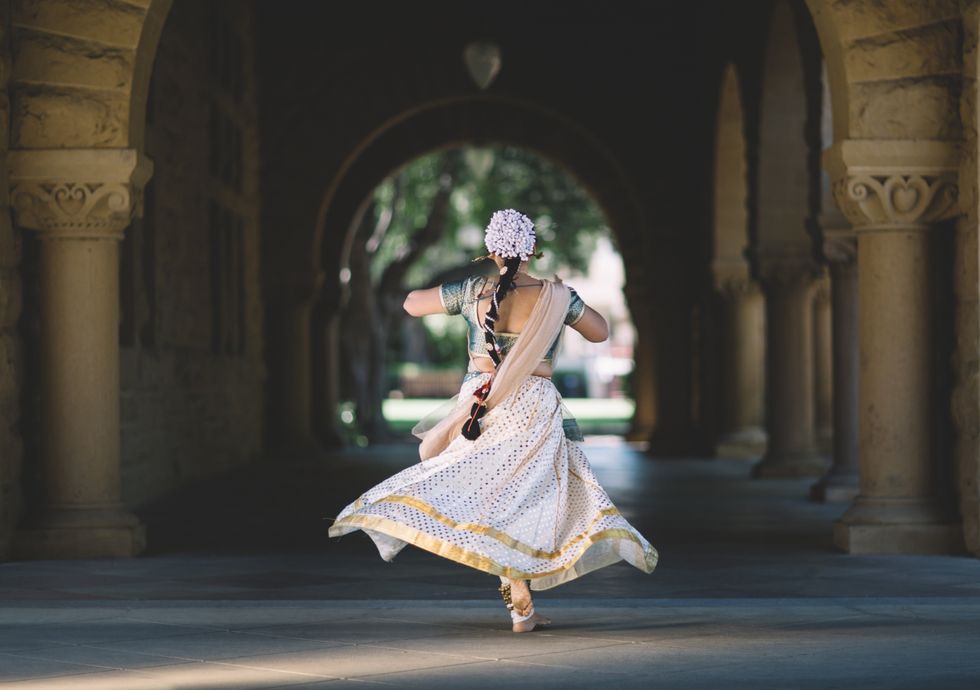India is a synonym of unity in diversity. As our country has now consciously moved towards becoming a global village, what we all strive for day and night, somewhere, somehow we are leaving behind the rich and diverse culture from which we originate. Having been given the opportunity to remember what we have forgotten, to rediscover our past, I would like to tell you all about the art forms that were once a source of entertainment to our people but have now been left behind to dust.
Every state has its own unique art form and tradition. As I am a South Indian, I would like to start with Karnataka. One of the most previously prevailing arts in Karnataka is Yakshagana which originated 400 years back. Yakshagana has been embedded in the history and culture of Karnataka for the past thousand years. This is a classical folk art, which has its roots in the mythologies and holy texts. Yakshagana is a traditional theatre form combining dance, music, spoken word, costume-makeup and stage technique with a distinct style and form.
Literally Yakshagana means "Songs of the Yakshas". Yakshas means a tribe, one whose mention we can find in the Mahabharata or in the ancient Hindu literature. According to Hindu mythology Yakshas are demigods and the attendants of Kubera. The origins of Yakshagana can be traced as early as eleventh century A.D. In the ancient days, Mangalore Yakshagana dance-drama was a ballad singing art form which was later on given the shape of a dance-drama. In the beginning, Yakshagana was performed by only a single dancer. It was during the 17th and 18th century, that it regained its current form of a dance-drama where various characters were introduced.
The stories of Yakshagana were drawn from the Ramayana, Mahabharata, Bhagvatha and other mythological episodes. One of its most remarkable features is that every time the dance is performed, it is performed with a new subject. Till date it has covered almost every theme from historical, secular to mythological. It consists of a narrator who narrates the story in a song-like fashion, backed by musicians playing on traditional instruments as the actors dance to the tune with actions that portray the story as it is being narrated. A Yakshagana performance begins at twilight with the beating of drums for up to a couple of hours before the actors get on stage. The actors wear resplendent costumes, head-dresses and painted faces which they paint themselves. Traditionally, the Yakshaganas would go on night long.
Yakshagana is a unique harmony of musical tradition, eye-catching costumes and authentic styles of dance, improvised gestures and acting with its extemporaneous dialogue appealing to a wide range of the community. In truth it is a vibrant, vigorous living form of theatre art. Sadly, there are at present only 30 full fledged professional troupes and about 200 amateur groups in Yakshagana. Professional troupes go on tours giving about 180-200 shows i.e. a full night show every day.
Another dance form that is lost in the fast rushed over-achieving life of today is Vilasini Natyam.
Vilasini Natyam (which means "hereditary dance tradition") is the name given to the sensual dance form of the bhogam-sannis, women consecrated by the temple deity in Andhra Pradesh. Called "devadasis" in neighboring Tamil Nadu, these women passed on their training exclusively to their daughters. Unfortunately this tradition came to an abrupt end when the devdasi practice was abolished in 1988 by the national government. Social pressures also threatened Vilasini Natyam. The dancers took an oath never to perform again. Nor would they teach the dance to their daughters.
Vilasini Natyam is a tradition followed by Kalavantalus. In its glorious period, the kings used to invite Kalavantalus to perform when there were guests at the court. This was to impress the guests with the art form. Vilasini Natyam is a demanding art form. The dancers of Vilasini Natyam have to sing on stage while performing, regardless of whether they have a good voice or not.
Vilasini Natyam as an ancient tradition existed only in the temples, before moving into the royal court. Though Vilasini Natyam movements appear quintessentially feminine, its hundred-odd Adavus (dance units) include the Tandava (vigorous) and Lasya (soft) aspects. Vilasini Natyam's complex Abhinaya is widely admired. Its extensive repertoire comprises Temple dances, Court dances and Dance operas of the hereditary female singer dancers of Telugu origin.
There are many more of such fast fading away art forms in all other parts of India. Mentioned above are just two of the numerous age-old traditions that have been abandoned in the course of adopting new ones. Our country is so rich in culture and tradition and if we can but do a little bit of effort from our side, by learning, encouraging and spreading the knowledge of this richness, we can easily save these vanishing traditions. Here's to rediscovering our India.

















